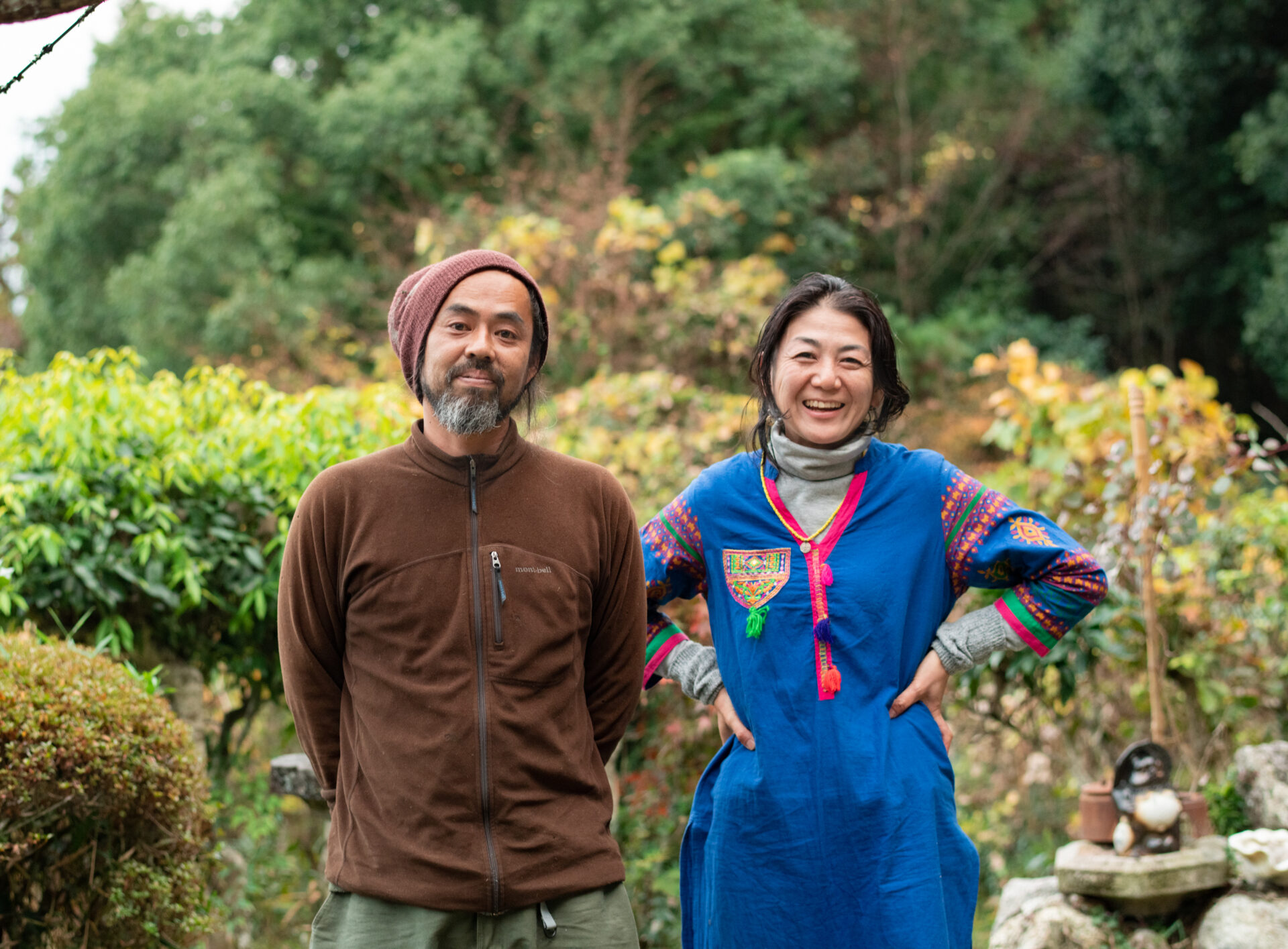In the eastern part of Nara City, Nara Prefecture, there is a family who moved back from Thailand to run a tea business. Their names are Hide and Asuka Koganei.
After working as developers in Tokyo, they moved to Moon Village, a Japanese commune in the town of Pai in northern Thailand, from 2005 to the spring of 2013. At the commune, there was no electricity or running water, and they provided most of their daily needs themselves.
Hide recalls his first attraction to tea, saying, “One of my fellow travellers always carried a tea set on the road. I thought that was really cool.”
This article will introduce this couple’s life in Thailand, and how it led to their life in Nara as tea farmers. Their experiences contain many hints on what it means to be a modern day “hyakusho” (traditional Japanese farmers).
Commune life in Thailand and reevaluating “common sense”
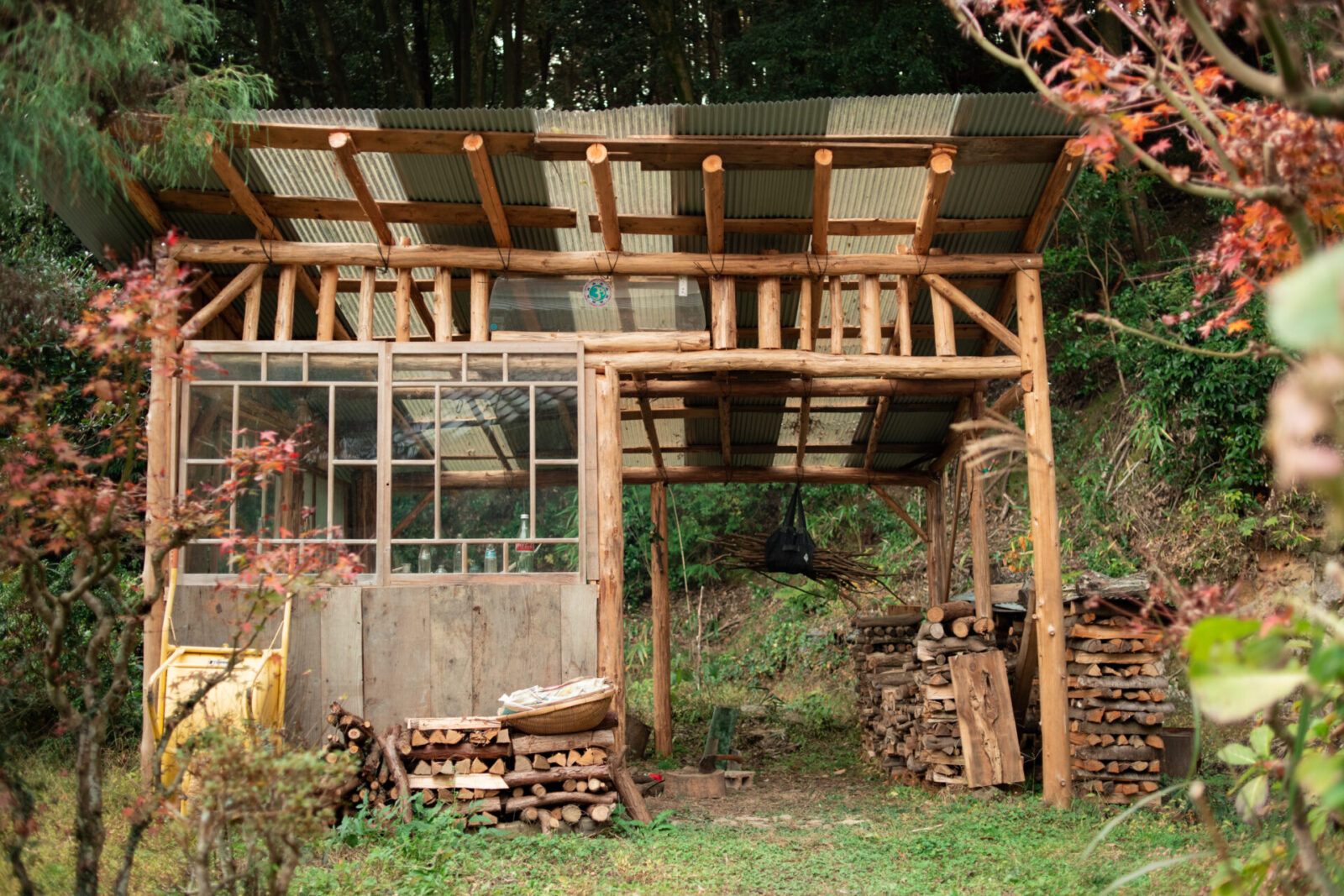
First of all, how did they end up living in Thailand? We asked Hide in his little hut where he roasts tea leaves, and he started by telling us about an experience he had back when he was working in Tokyo.
“I was working in a cafe and bar in Harajuku, Tokyo, when I met Asuka, who was working as a photographer. She went on an assignment in Thailand and won a free plane ticket from Thai Airways, which she gave to me as a gift from her trip.”
With the plane ticket they got by chance, they decided to visit Moon Village, a place they had been interested in for some time. This visit changed their lives.
Asuka shares, “The place was amazing. In Moon Village, the residents dig wells for their water, use firewood for cooking, compost any waste that they can, and live sustainably. They lived this way as if it were the norm, but we were shocked that there was such a place and way of life.”
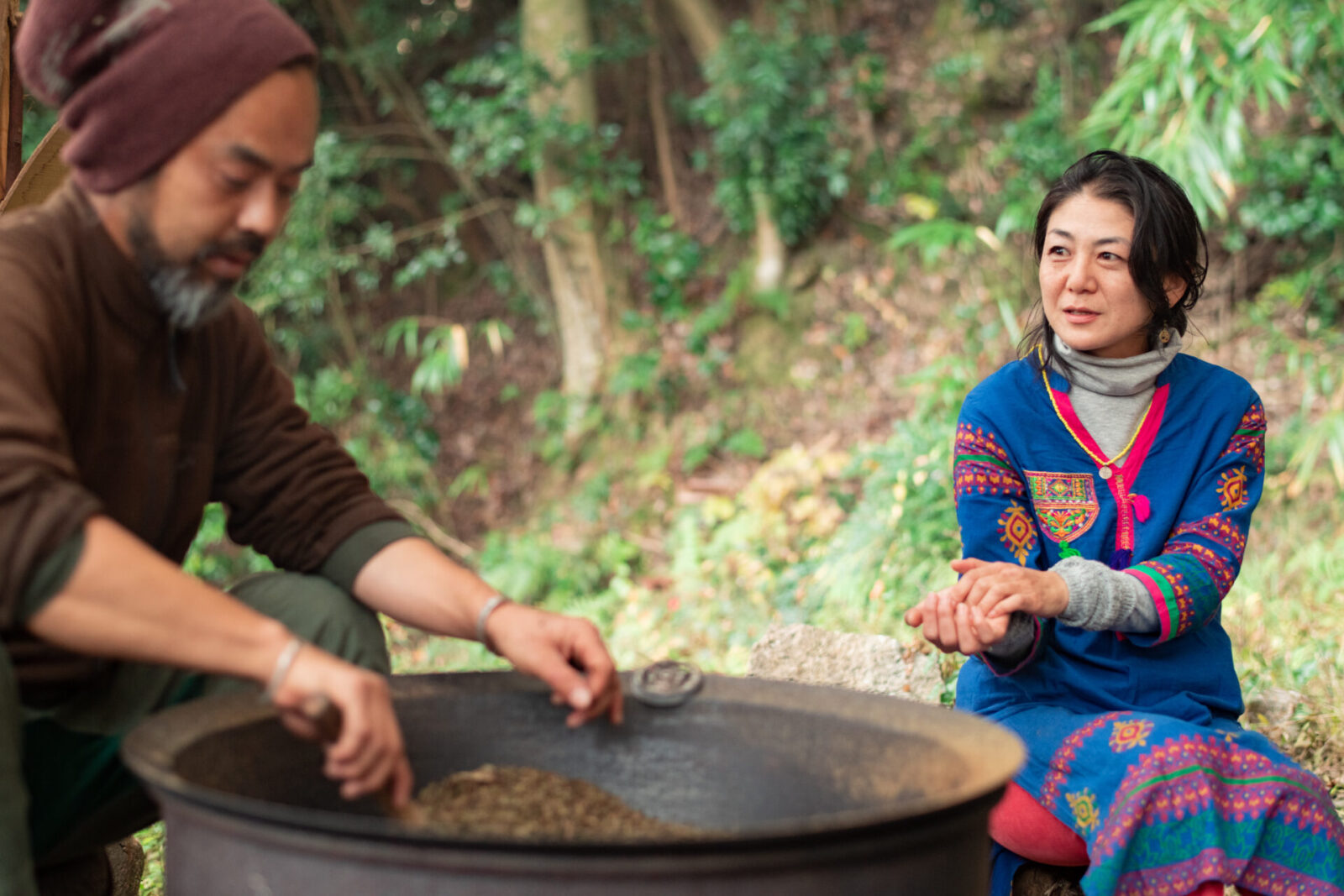
Hide felt the same way.
“We were so impressed. It was so different from what I considered to be cool in Tokyo. The way they lived so independently, using their own energy to sustain their life was cool. So many of the residents were such cool guys and I just wanted to be like them.”
Life in a small hut, fetching water from the well every morning

During that first trip, they also traveled to India and Nepal for a few months before returning to Japan. However, the days they spent at Moon Village left the biggest impression on them.
The residents of the Moon Village told them that they should visit again during rice harvesting season, so they made another trip to Pai two years later.
“While we were enjoying our stay and meeting different people, one of the residents told us that they were leaving for a long term trip and asked if we would house-sit for them. Immediately, I thought it would be fun.”
“I found the lifestyle of digging the wells and sweeping the roads every morning to be very beautiful. So our stay in Moon Village shifted from a visit to our new way of life.”
Hide looks back on those days fondly.

Soon after, the couple got married and Asuka gave birth to their first son. The house they lived in at the time was a hut built on high stilts with wooden pillars, bamboo walls, and floor and roof made out of leaves.
The first thing they did when they woke up in the morning was fetch water from the well and make coffee over an open fire. They cooked, did laundry in the river, and ate the vegetables from their garden and wild fruit such as bananas. Because there was no electricity, they went to bed early.
Asuka says, “Although the lifestyle was not convenient, it was rich. When I think back on those days, they were beautiful and inspiring.”
Words from a traveller with a tea set
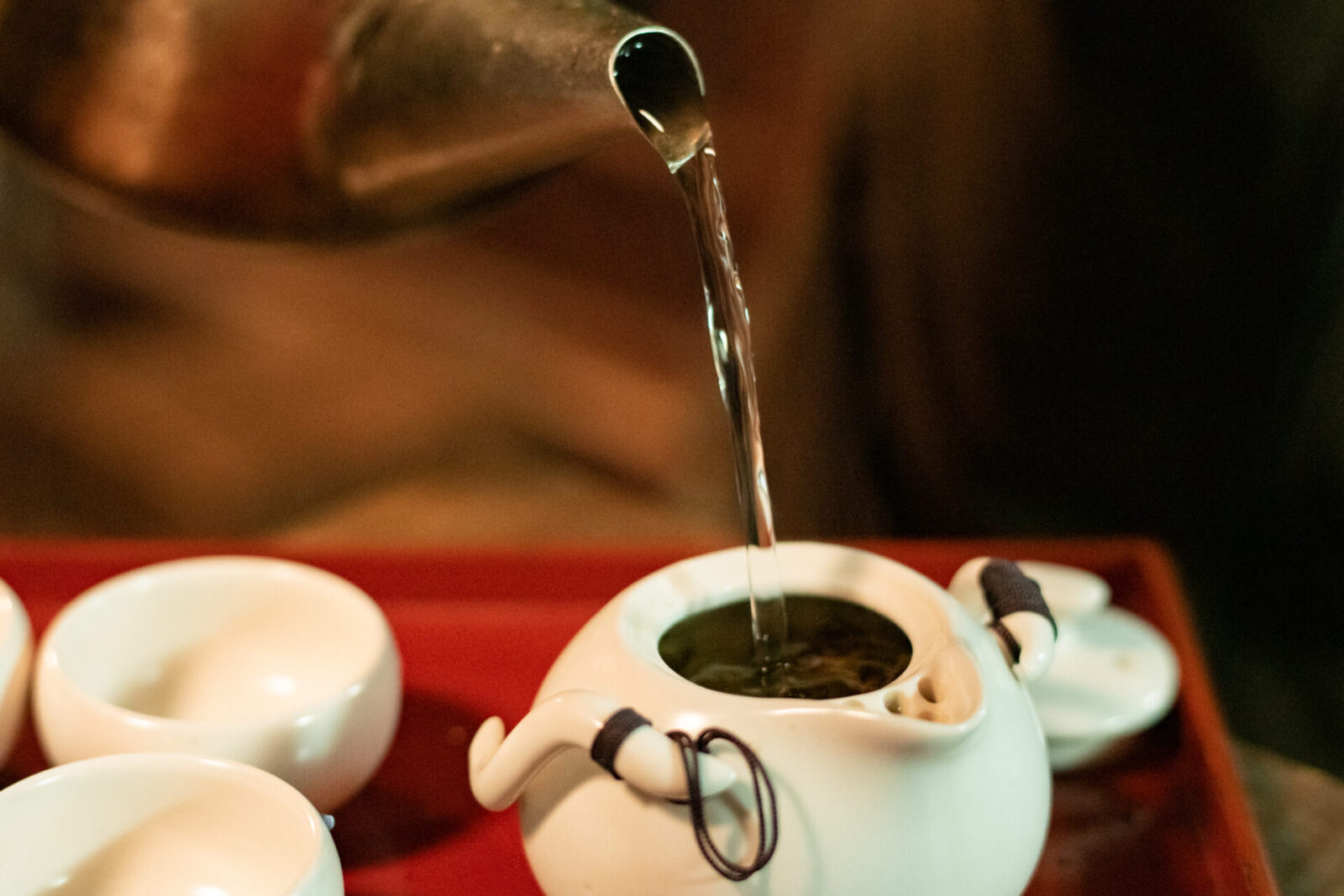
The beginning of life with tea in Nara Prefecture started because of the need to find work to make a living. Hide was not working in Thailand, so he would come back to Japan for certain periods of the year to make money. He would return to Thailand to live until they ran out of money, and continued this cycle of traveling between Japan and Thailand.
“At first, I would mostly do day jobs in Tokyo, but in order to do that, I needed to rent an apartment. Since I mostly lived in Thailand, it felt wasteful to have to pay for the rent deposits.”
Hide knew a lot of other travelers and found out that many of them did seasonal labor. They worked all around Japan, such as at salmon processing factories in Hokkaido, or sugar factories in Okinawa, and they introduced him to these jobs.

“A fellow traveler was working part-time at a tea factory in the Tahara area of Nara City and he asked me if I wanted to join him. I thought it would be better than staying in Tokyo, and that was my first encounter with Nara and tea.”
Although he experienced different seasonal jobs, he was most intrigued by the work with tea.
“My friend who introduced me to the job in Nara would travel with a tea set. I thought it was so cool. He had different teas that he liked in his box and wherever he was he would casually choose the one he wanted to drink each day. I was so impressed at how chill he was and wanted to be an adult like him.”
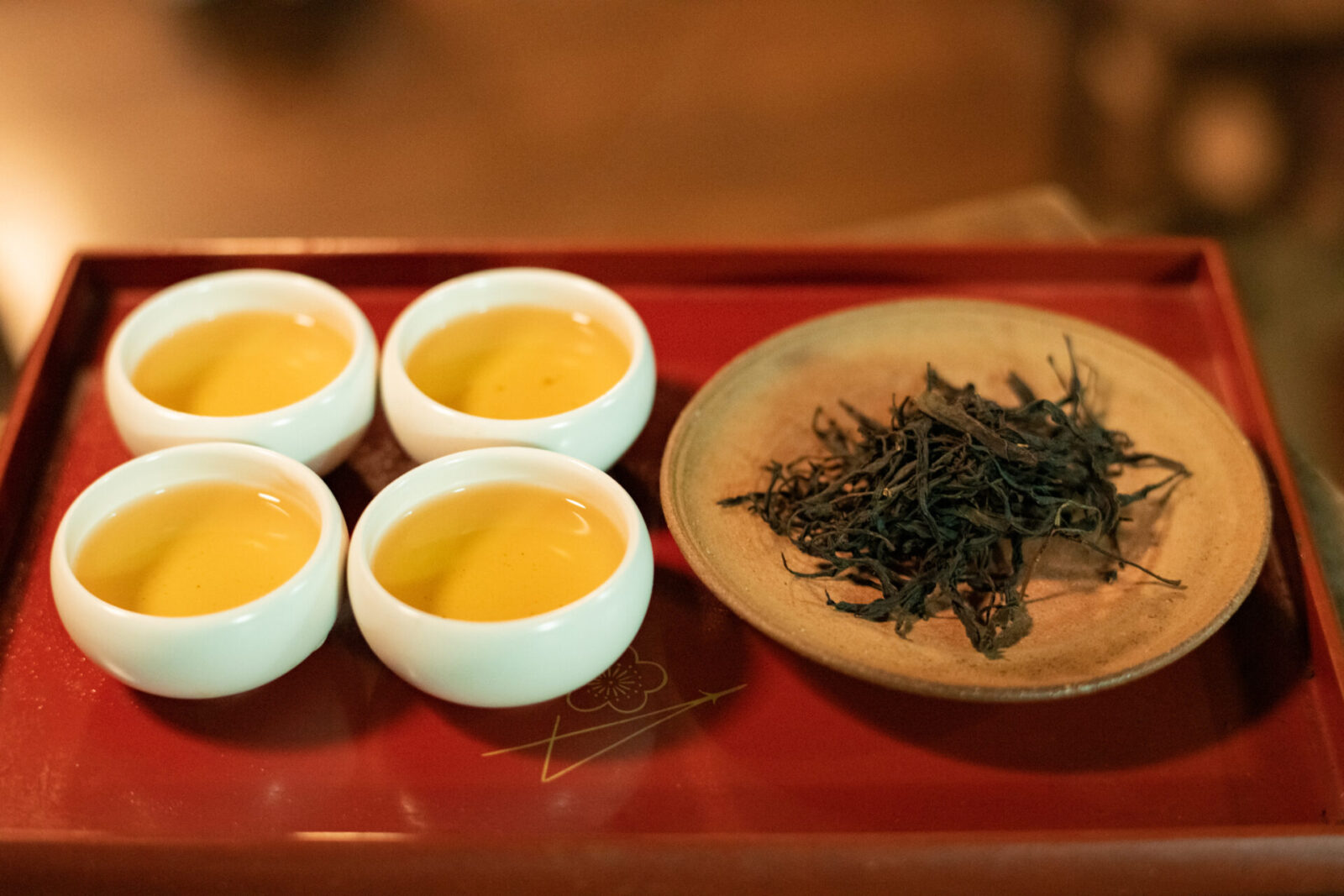
“At the tea factory where I worked, I tasted the tea that I helped make and it was so delicious. I thought this was a job I could enjoy. I also learned about the history of tea in Japan, and was fascinated by how deep the world of tea was.”
It is estimated that tea was brought to Japan during the Nara and Heian periods by envoys and monks from China. In Nara, Kobo-Daishi brought back tea seeds from the Tang Dynasty in 806 and introduced the process of making tea, which is said to be the origin of Nara’s tea, Yamato-cha.
Tea was once a precious commodity that was only enjoyed by a small population, but was later considered to be an effective medicinal plant and started to be cultivated all over the country. Hide was fascinated by tea’s rich history and culture.
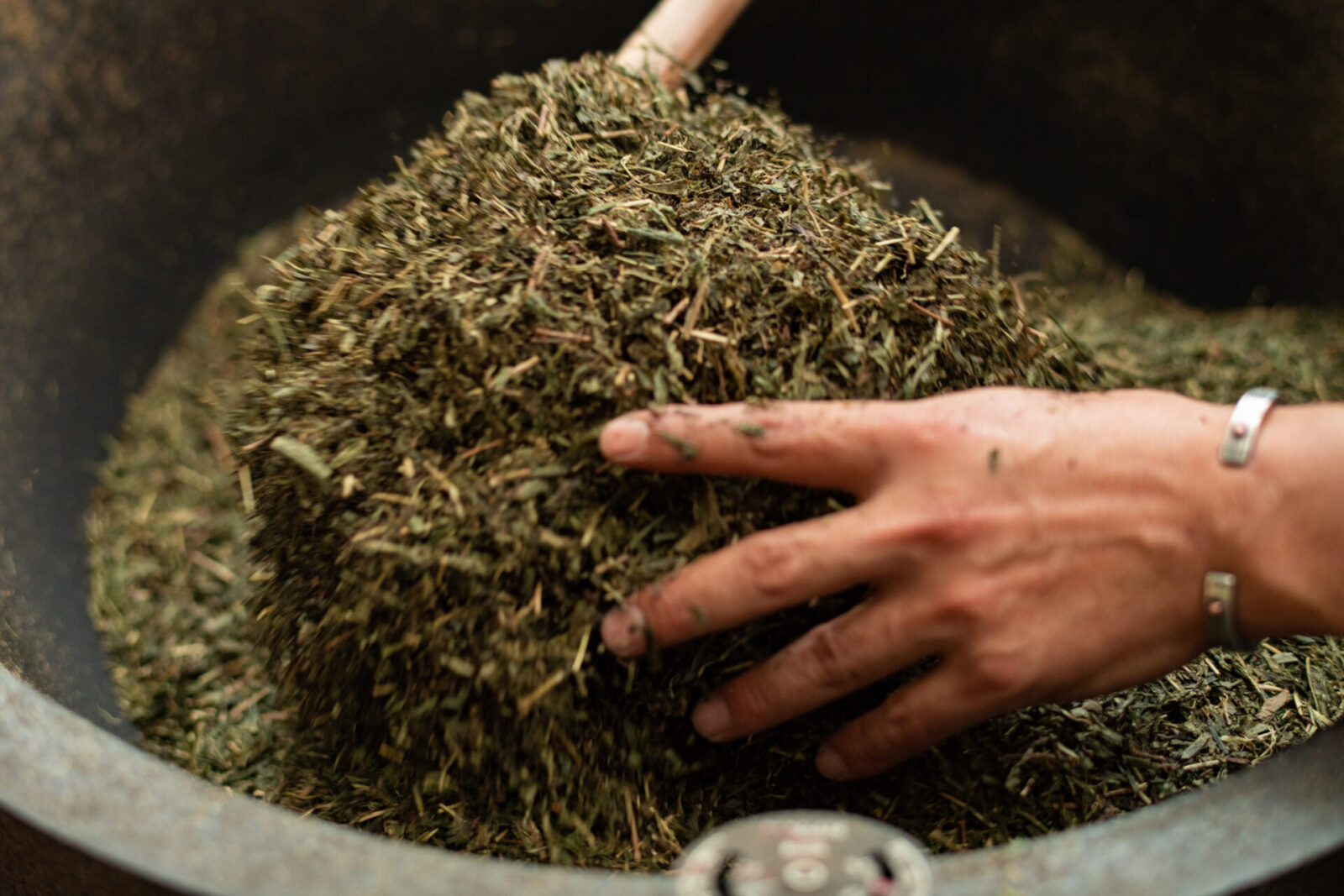
Preserving the beauty of tea plantations
While Hide spent more time working in tea factories, he had more opportunities to speak with tea farmers. They told him about how things were in the past when there was a good market for tea, and how the market is today.
“Everyone was working harder, but their businesses were going down. I thought about it and made some suggestions, such as trying to grow tea organically, but they told me it’s not possible. I decided to give it a try myself and find joy in exploring different ways to work with tea farming.”
“I wanted to cherish the experiences and knowledge I gained through my life in Thailand, and that was when I entered the world of tea. I wanted to provide organic and high quality options for food that we eat everyday, like rice and tea, and that they get served to my family and friends. Working to grow my own tea just made sense to me.”
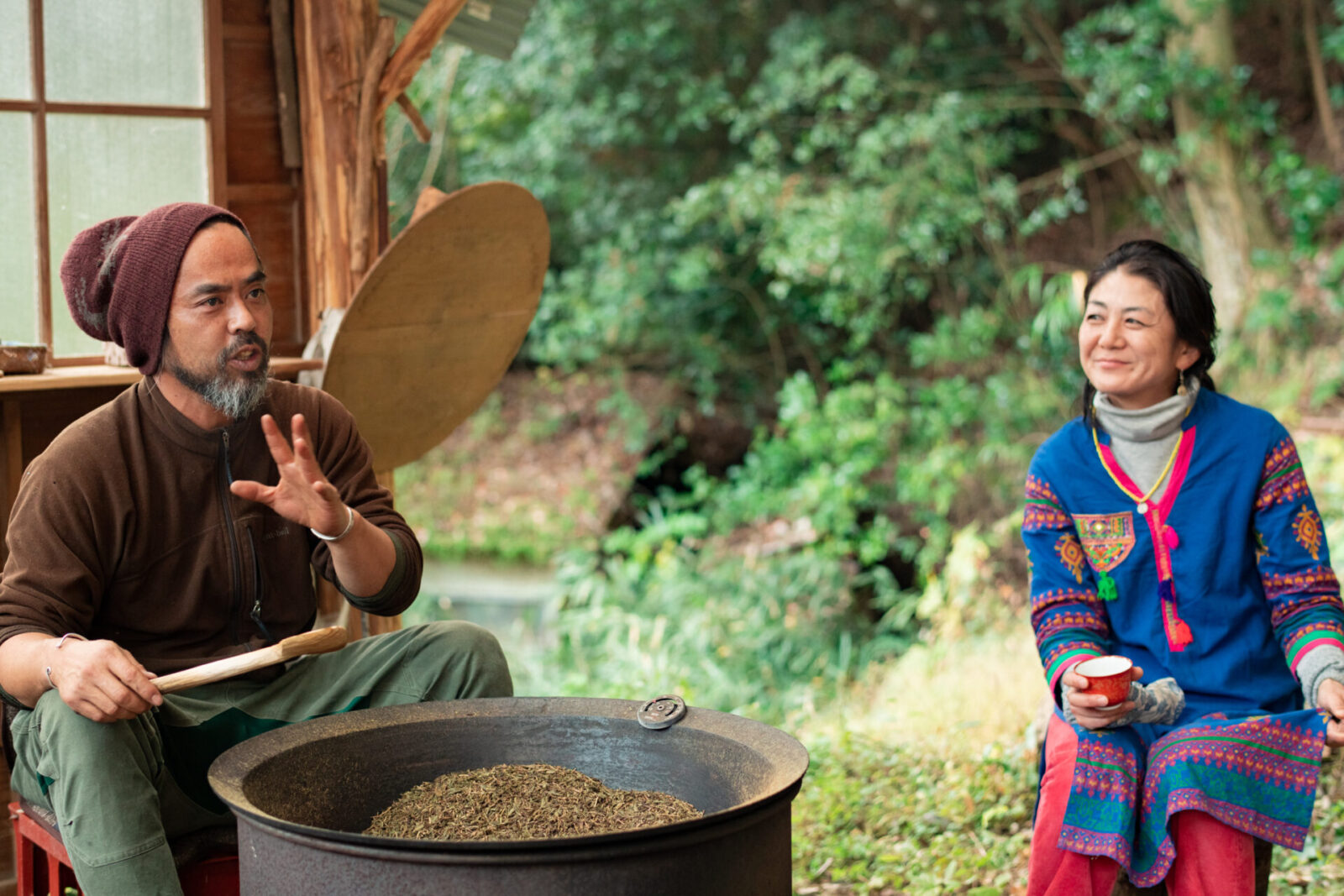
Another reason he made the decision to become a tea farmer was because he was enthralled by the beautiful scenery the tea plantations created and wanted to leave that for future generations.
With the aging population among tea farmers, many tea plantations around Japan are falling into disrepair.
“I want to do my small part in preserving this beauty.”
After two years of working in the tea farms, Hide had Asuka and his children moved to Nara to join him and they rented an empty house to live in together. It was the beginning of their life of going back and forth between Nara and Thailand.
He began experimenting with tea right away. First, he purchased his favorite “karigane tea” (tea leaves with only the stems) from the tea factory he worked for, and had them roasted by a professional tea roaster. He then started selling his original karigane roasted tea.

Chemical-free, nature-made tea
While they were happy with their life in Thailand, their oldest son expressed his desire to attend a Japanese elementary school so the family decided to move back to Japan permanently.
In the spring of 2013, the family moved to Nara to live there full time.
“We were living like hippies in Thailand, so when my son suddenly said he wanted to attend a Japanese elementary school, I wondered what he was feeling. We moved back to Japan just one week before the beginning of the school year and entrance ceremony for first grade.”
Hide and Asuka laugh as they recall these memories. Their self-reliant and free spirit, in which they value their own ideas and sensations, proved to be very useful in their life in Nara as well.

The year Hide returned to Japan with his family, he became an independent tea farmer. An elder tea farmer was about to retire and asked him if he wanted to take over their plantation, so he now borrows the land for his plantation.
“The first Karigane roasted tea was not from the tea I cultivated, but from conventional farming using pesticides, so I felt I couldn’t proudly recommend it to others. If I was going to grow my own tea, I wanted to make it something of a good quality.”
Hide began growing tea organically by using natural farming methods. Asuka helped with designing the tea packaging and tea harvesting.
Hide chose to borrow plantation lands that had been neglected for several years rather than borrowing plantations that had been using pesticides or fertilizers until the previous year. He borrowed land where the tea tree’s branches were so overgrown that they were taller than himself. He cut the tea trees short and back into how a tea plantation should look.
Eight years passed by quickly since then. The two now not only grow their own tea leaves, but they process the leaves as well. Under their business name Asahiya, they currently sell two types of tea: “Oyako Houji” and “Koganeiro”.
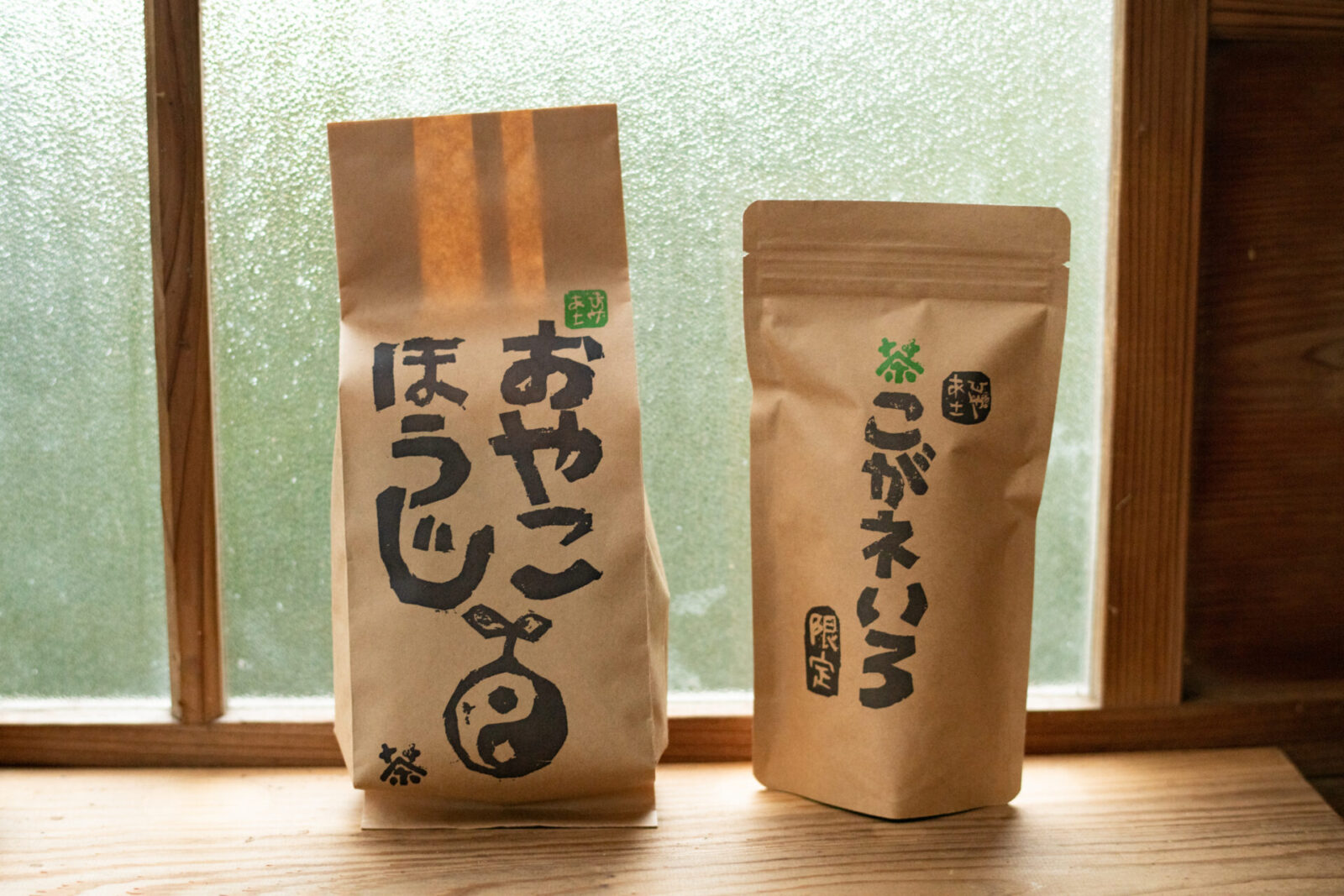
In addition to tea farming, the two take what they learned in Thailand and enjoy creating a more self-sustaining lifestyle.
They grow their own vegetables, make bacon and other preserved foods, such as miso and other seasonings. They hunt and fish, make their own furniture and tableware, and even fix their own house. According to Asuka, “Living is a game you bet your life on to enjoy.”
Finding “chill time” to relax with tea
We asked how the two enjoy tea time.
Asuka answered, “Whenever we have guests, we always serve tea and drink it together. Tea helps connect people, so tea is a tool for communication. People often say, ‘let’s go have some tea.’ Tea time is time for people to share and connect. That’s what I like about it.”
Hide answered, “As I mentioned before, it’s nice that tea is easy to make even during while traveling, and it feels like a meaningful way to pass time. Don’t you think that there’s something our society today could gain by bringing back that relaxed way of spending time?”
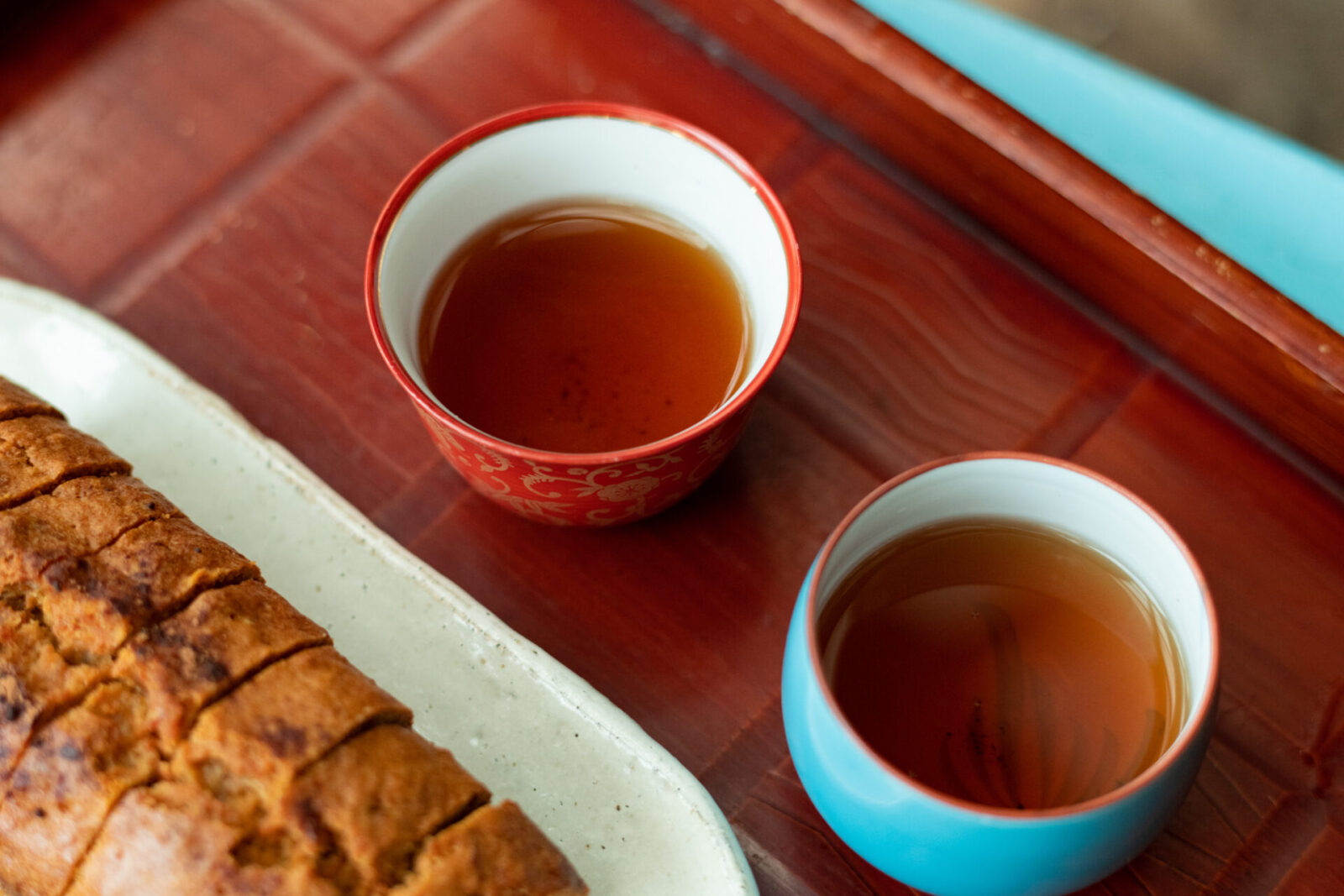
“When I was growing rice, I realized that there are differences in the rice depending on where it was cultivated and the strain of rice. Until then, all white rice was the same to me, but I started to understand the differences. When you become involved in the process of making something, you yourself changes. The exact same thing happened with tea. I feel that the fact that I can feel those differences shows that I have grown to be more open.”
Hide added, “I think this kind of inner openness was more prominent in the past.”
“The other day, my friend told me about the theory of regressive evolution. A lot of things have evolved in this world, but perhaps we are reaching some kind of limit. If we can regress a little bit and live more closely with nature like we did in the past, I think it is possible to use our time to enjoy tea more slowly. To me, that is my definition of evolution. I want people to simply enjoy tea, so I will keep being a tea farmer.”
Hide and Asuka Koganei enjoy their lives growing tea and living life at their own pace, while delivering their creations all over Japan. All so we can also “evolve” to appreciate the different tastes of tea, and find the time to relax and enjoy a cup with one another. Their expedition in the world of tea will continue.

(Photo:川しまゆうこ)
Editor and writer. Freelance from 2003. Specializes in local and social issues, and the medical field. Reporting and writing for the magazine “Sotokoto” and web media “Through Me”. Editor for books including “Like a Rolling Komuin (Civil Servant)” by Hiroaki Fukuno and “Community Nurse” by Akiko Yada (both published by Kirakusha). Moved from Tokyo to Nara in 2017. Holds an yearly course on the “basics of editing” for the general public in Nara Prefecture.
Editor and creator of the future through words. Former associate editor of Huffington Post Japan. Became independent after working for a publishing company and overseas news media. Assists in communications for corporates and various projects. Born in Gifu, loves cats.
